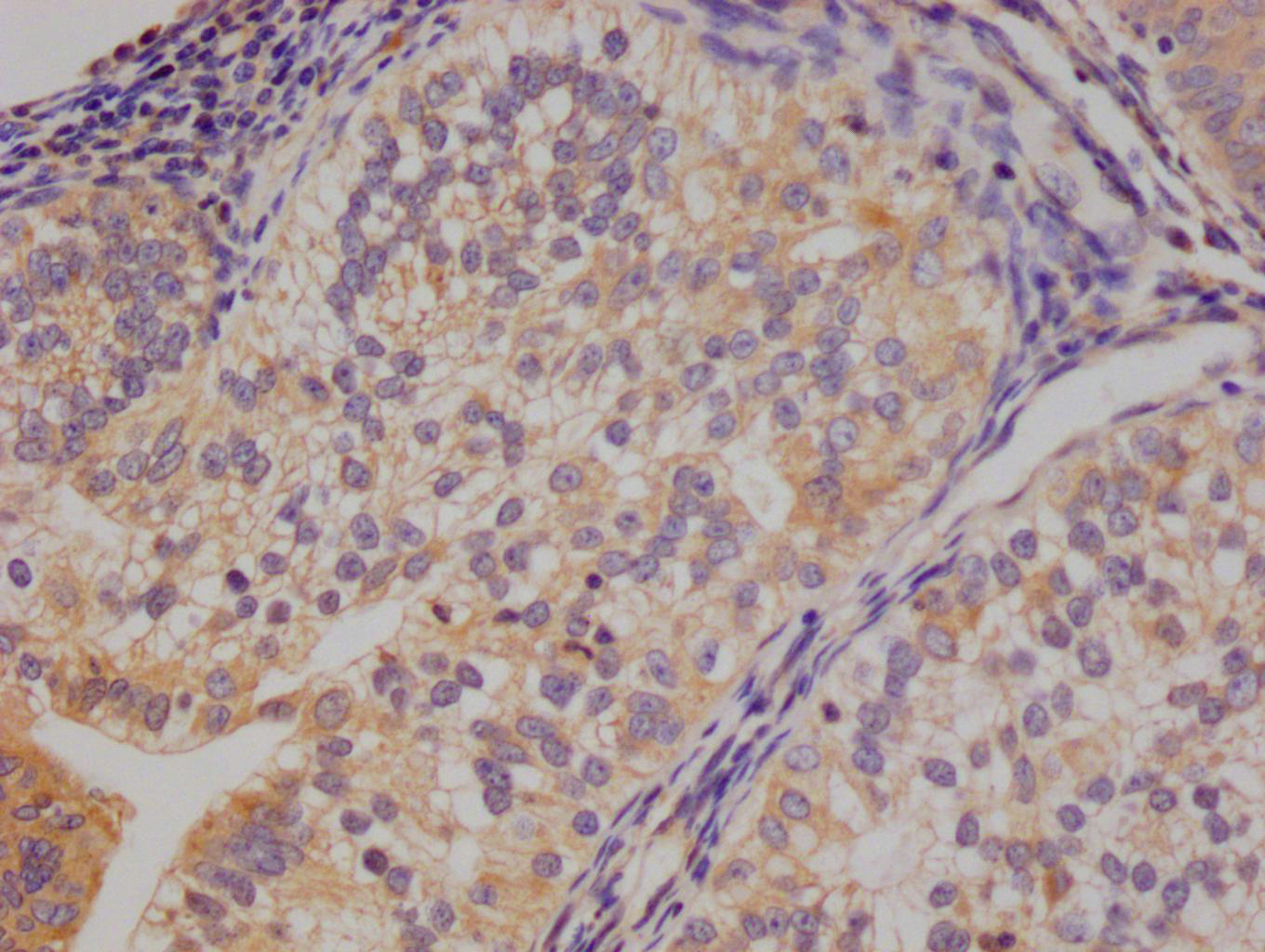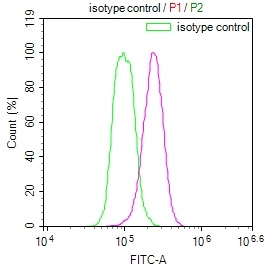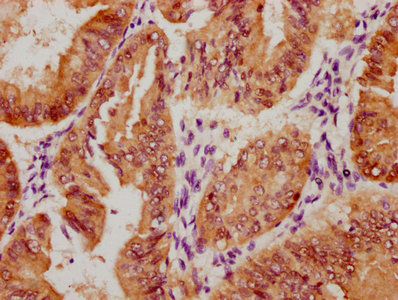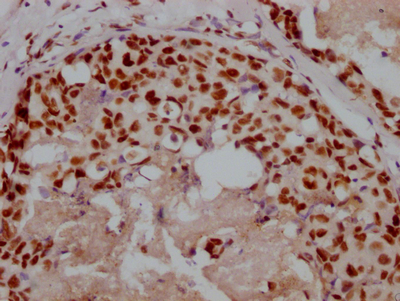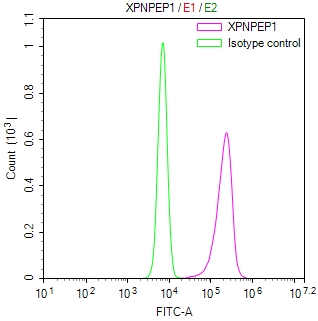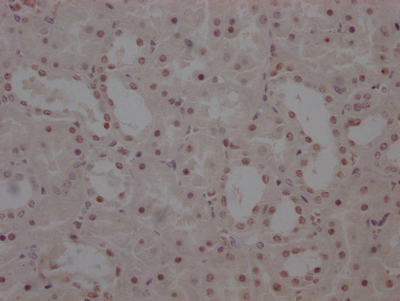PIGH Antibody
-
中文名稱:PIGH兔多克隆抗體
-
貨號:CSB-PA030054
-
規(guī)格:¥1090
-
其他:
產(chǎn)品詳情
-
Uniprot No.:
-
基因名:PIGH
-
別名:PIGH antibody; Phosphatidylinositol N-acetylglucosaminyltransferase subunit H antibody; EC 2.4.1.198 antibody; Phosphatidylinositol-glycan biosynthesis class H protein antibody; PIG-H antibody
-
宿主:Rabbit
-
反應種屬:Human,Mouse
-
免疫原:Synthesized peptide derived from the C-terminal region of Human PIG-H.
-
免疫原種屬:Homo sapiens (Human)
-
標記方式:Non-conjugated
-
抗體亞型:IgG
-
純化方式:The antibody was affinity-purified from rabbit antiserum by affinity-chromatography using epitope-specific immunogen.
-
濃度:It differs from different batches. Please contact us to confirm it.
-
保存緩沖液:Liquid in PBS containing 50% glycerol, 0.5% BSA and 0.02% sodium azide.
-
產(chǎn)品提供形式:Liquid
-
應用范圍:IHC, ELISA
-
推薦稀釋比:
Application Recommended Dilution IHC 1:100-1:300 ELISA 1:40000 -
Protocols:
-
儲存條件:Upon receipt, store at -20°C or -80°C. Avoid repeated freeze.
-
貨期:Basically, we can dispatch the products out in 1-3 working days after receiving your orders. Delivery time maybe differs from different purchasing way or location, please kindly consult your local distributors for specific delivery time.
-
用途:For Research Use Only. Not for use in diagnostic or therapeutic procedures.
相關產(chǎn)品
靶點詳情
-
功能:Part of the glycosylphosphatidylinositol-N-acetylglucosaminyltransferase (GPI-GnT) complex that catalyzes the transfer of N-acetylglucosamine from UDP-N-acetylglucosamine to phosphatidylinositol and participates in the first step of GPI biosynthesis.
-
基因功能參考文獻:
- Results from a study on gene expression variability markers in early-stage human embryos shows that PIGH is a putative expression variability marker for the 3-day, 8-cell embryo stage. PMID: 26288249
-
亞細胞定位:Cytoplasm.
-
蛋白家族:PIGH family
-
數(shù)據(jù)庫鏈接:
Most popular with customers
-
-
YWHAB Recombinant Monoclonal Antibody
Applications: ELISA, WB, IHC, IF, FC
Species Reactivity: Human, Mouse, Rat
-
Phospho-YAP1 (S127) Recombinant Monoclonal Antibody
Applications: ELISA, WB, IHC
Species Reactivity: Human
-
-
-
-
-


